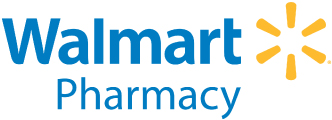Overactive Bladder
Overactive bladder (OAB) is a urological condition defined by a set of symptoms: urgency, with or without urge incontinence, usually with frequency and nocturia. Frequency is usually defined as urinating more than 8 times a day. The International Continence Society is responsible for this definition. There exists, however, some controversy over the use of this term because these symptoms taken in isolation may overlap with those of other bladder conditions, including interstitial cystitis, or rarely even bladder tumours.
The etiology of OAB is unclear, and indeed there may be multiple possible causes. It is often associated with overactivity of the Detrusor urinae muscle, a pattern of bladder muscle contraction observed during urodynamics. Treatments for OAB are usually synonymous with treatments for detrusor overactivity. OAB is distinct from stress urinary incontinence, but when they occur together, the condition is usually known as mixed incontinence.
Earlier reports estimated that about one in six adults in the United States and Europe had OAB. The prevalence of OAB increases with age, thus it is expected that OAB will become more common in the future as the average age of people living in the developed world is increasing. However, a recent Finnish population-based survey suggested that the prevalence had been largely overestimated due to methodological shortcomings regarding age distribution and low participation (in earlier reports). It is suspected, then, that OAB affects approximately half the number of individuals as earlier reported.
Kidney Stones
A kidney stone, also known as a renal calculus (from the Latin ren, "kidney" and calculus, "pebble") is a solid concretion or crystal aggregation formed in the kidneys from dietary minerals in the urine. Urinary stones are typically classified by their location in the kidney (nephrolithiasis), ureter (ureterolithiasis), or bladder (cystolithiasis), or by their chemical composition (calcium-containing, struvite, uric acid, or other compounds). Kidney stones are a significant source of morbidity. 80% of those with kidney stones are men. Men most commonly experience their first episode between age 30–40 years, while for women the age at first presentation is somewhat later.
Kidney stones typically leave the body by passage in the urine stream, and many stones are formed and passed without causing symptoms. If stones grow to sufficient size (usually at least 3 millimeters (0.12 in)) they can cause obstruction of the ureter. Ureteral obstruction causes postrenal azotemia and hydronephrosis (distension and dilation of the renal pelvis and calyces), as well as spasm of the ureter. This leads to pain, most commonly felt in the flank (the area between the ribs and hip), lower abdomen and groin (a condition called renal colic). Renal colic can be associated with nausea, vomiting, fever, blood in the urine, pus in the urine, and painful urination. Renal colic typically comes in waves lasting 20 – 60 minutes, beginning in the flank or lower back and often radiating to the groin or genitals. The diagnosis of kidney stones is made on the basis of information obtained from the history, physical examination, urinalysis, and radiographic studies. Ultrasound examination and blood tests may also aid in the diagnosis.
When a stone causes no symptoms, watchful waiting is a valid option. For symptomatic stones, pain control is usually the first measure, using medications such as non-steroidal anti-inflammatory drugs (NSAIDs) or opioids. More severe cases may require surgical intervention. For example, some stones can be shattered into smaller fragments using extracorporeal shock wave lithotripsy (ESWL). Some cases require more invasive forms of surgery. Examples of these are cystoscopic procedures such as laser lithotripsy, or percutaneous techniques such as percutaneous nephrolithotomy. Sometimes, a tube (ureteral stent) may be placed in the ureter to bypass the obstruction and alleviate the symptoms, as well as to prevent ureteral stricture after ureteroscopic stone removal.
Benign Prostatic Hyperplasia
Benign prostatic hyperplasia (BPH) also known as benign prostatic hypertrophy (technically a misnomer), benign enlargement of the prostate (BEP), and adenofibromyomatous hyperplasia, refers to the increase in size of the prostate.
Properly, BPH involves hyperplasia rather than hypertrophy, but the nomenclature is often interchangeable, even amongst urologists. It involves hyperplasia of prostatic stromal and epithelial cells, resulting in the formation of large, fairly discrete nodules in the periurethral region of the prostate. When sufficiently large, the nodules compress the urethral canal to cause partial, or sometimes virtually complete, obstruction of the urethra, which interferes with the normal flow of urine. It leads to symptoms of urinary hesitancy, frequent urination, dysuria (painful urination), increased risk of urinary tract infections, and urinary retention. Although prostate specific antigen levels may be elevated in these patients because of increased organ volume and inflammation due to urinary tract infections, BPH is not considered to be a premalignant lesion.
Adenomatous prostatic growth is believed to begin at approximately age 30 years. An estimated 50% of men have histologic evidence of BPH by age 50 years and 75% by age 80 years. In 40-50% of these patients, BPH becomes clinically significant.
































